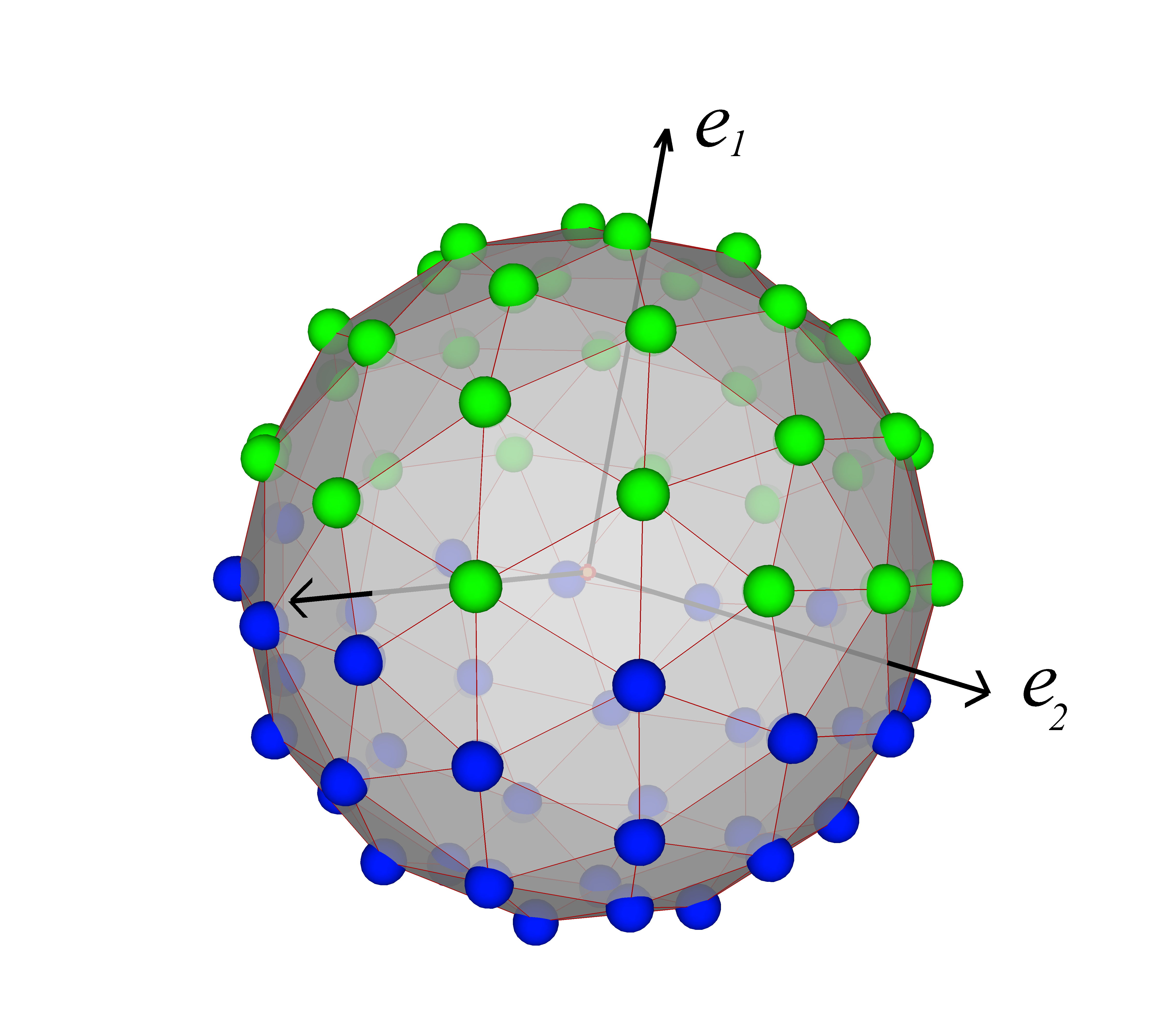
Ali Kharazmi and Nikolai V. Priezjev
Understanding the processes of self- and directed-assembly of nanoparticles is important for design of various nanostructured materials with advantageous
mechanical and optical properties. Recent progress in synthesis of Janus particles, that can form a variety of predictable superstructures, makes their
production feasible at an industrial scale. The dynamics of assembly, however, depends on the shape of the particle, distribution of wettability and charges,
and boundary conditions at the particle surface in a solvent.

In this animation one can see a typical diffusive trajectory of the Janus particle during a time interval of about 200t. The total number of solvent molecules is 46531 (not shown).

We found that the diffusion coefficient of a Janus particle is bounded between the two limiting cases and it increases with decreasing surface energy at the
nonwetting hemisphere. The analysis of the translational and angular velocity autocorrelation functions showed that the exponents of the long-time power-law
decay are the same for Janus and homogeneous particles. Interestingly, the diffusive motion of Janus particles involves a subtle correlation between
translational and angular velocities; i.e., a non-zero velocity component parallel to the particle symmetry plane causes a finite rotation of the nonwetting
side towards the displacement vector to reduce drag.

"Molecular dynamics simulations of the rotational and translational diffusion of a Janus rod-shaped nanoparticle"
A. Kharazmi and N.V. Priezjev, Journal of Physical Chemistry B 121, 7133 (2017), pdf copy
"Diffusion of a Janus nanoparticle in an explicit solvent: A molecular dynamics simulation study"
A. Kharazmi and N.V. Priezjev, J. Chem. Phys. 142, 234503 (2015), pdf copy
The support of the National Science Foundation (grant CBET-1033662) is gratefully acknowledged.
Molecular dynamics simulations were performed at Michigan State
University's High Performance Computing Facility and the
Ohio Supercomputer Center using the LAMMPS numerical code.
Back to Nikolai Priezjev's page